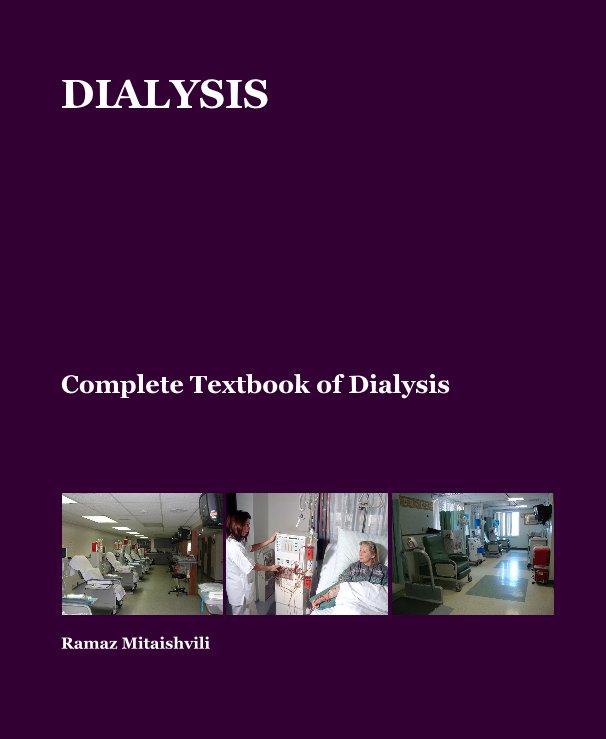DIALYSIS
Complete Textbook of Dialysis
by Ramaz Mitaishvili
This is the price your customers see. Edit price list
About the Book
An estimated 26 million people, 13% of the United States population, are living with Chronic Kidney Disease (CKD), and this number continues to grow. If current trends continue, there will not be enough specialists to serve this expanding patient population.
In medicine, dialysis (from Greek "dialusis", meaning dissolution, "dia", meaning through, and "lysis", meaning loosening) is primarily used to provide an artificial replacement for lost kidney function in people with renal failure. Dialysis may be used for those with an acute disturbance in kidney function (acute kidney injury, previously acute renal failure) or for those with progressive but chronically worsening kidney function–a state known as chronic kidney disease stage 5 (previously chronic renal failure or end-stage kidney disease). The latter form may develop over months or years, but in contrast to acute kidney injury is not usually reversible, and dialysis is regarded as a "holding measure" until a renal transplant can be performed, or sometimes as the only supportive measure in those for whom a transplant would be inappropriate.
Across the nation, dialysis technicians are assuming increasing responsibility for the
safety and well-being of patients on dialysis. From dialyzer reprocessing to patient care, technician training and experience are a crucial link in providing safe and effective patient care.
The purpose of the Textbook for the Dialysis Technician is to provide basic information on the varying duties dialysis technicians may have in a dialysis center. The modules cover both technical and clinical aspects of dialysis treatment.
This Textbook for the Dialysis Technician is offered as a general educational guide for dialysis technicians and other medical professionals.
ISBN: Hardcover 978-0-9827274-1-6
In medicine, dialysis (from Greek "dialusis", meaning dissolution, "dia", meaning through, and "lysis", meaning loosening) is primarily used to provide an artificial replacement for lost kidney function in people with renal failure. Dialysis may be used for those with an acute disturbance in kidney function (acute kidney injury, previously acute renal failure) or for those with progressive but chronically worsening kidney function–a state known as chronic kidney disease stage 5 (previously chronic renal failure or end-stage kidney disease). The latter form may develop over months or years, but in contrast to acute kidney injury is not usually reversible, and dialysis is regarded as a "holding measure" until a renal transplant can be performed, or sometimes as the only supportive measure in those for whom a transplant would be inappropriate.
Across the nation, dialysis technicians are assuming increasing responsibility for the
safety and well-being of patients on dialysis. From dialyzer reprocessing to patient care, technician training and experience are a crucial link in providing safe and effective patient care.
The purpose of the Textbook for the Dialysis Technician is to provide basic information on the varying duties dialysis technicians may have in a dialysis center. The modules cover both technical and clinical aspects of dialysis treatment.
This Textbook for the Dialysis Technician is offered as a general educational guide for dialysis technicians and other medical professionals.
ISBN: Hardcover 978-0-9827274-1-6
Features & Details
- Primary Category: Medicine & Science
-
Project Option: Standard Portrait, 7.75×9.75 in, 20×25 cm
# of Pages: 346 - Publish Date: Dec 31, 2010
- Keywords respiratory Therapy, Internal medicine, renal disorders, dialysis technician, dialysis center, kidney failure, liver failure, diabetes mellitus, Dialysis, RN, Anesthesiology, Medicine, Pharmacy, Nephrology, uremia, kidney, diabetes, anatomy, physiology
See More


